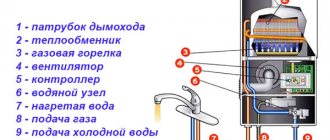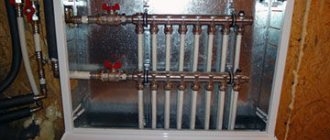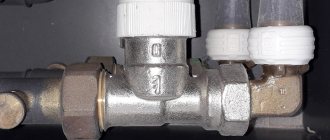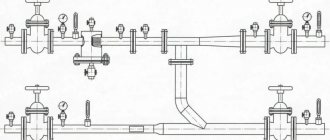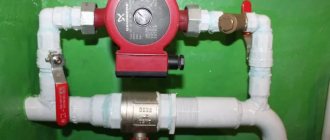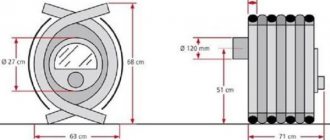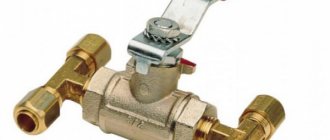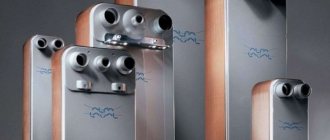Even though we live in the 21st century, periodic water outages still haunt us. These days, an electric water heater or boiler is becoming an indispensable assistant. This product is also very popular among summer residents if there is no centralized hot water supply in the house. The undoubted leaders in the Russian water heater market are 2 companies Thermex and Ariston.
Any water heater has several consumables, the periodic need for replacement of which is prescribed by the manufacturer. This is a heating element and an anode.
Heating element for a water heater: purpose
Availability of hot water is the basis of comfort for everyone. There is a wide selection of boilers on the market for this purpose. The main source of hot water for home heating is the water heater. Electric heaters are quite popular, which is why a variety of models of such units are sold on the household appliances market. The most important role in its design is played by the heating device - heating element. This is a kind of internal battery, stands for Tubular Electric Heater. The part is represented by a metal tube of different shapes for different models of boilers.
Results
Heating element device
– a product of many years of development. The long journey of its creation has led to the fact that the design of a tubular heating element allows you to obtain maximum heat with minimal costs and investments, the disadvantages of this type of heating elements are very conventional and can be easily solved, and the calculations necessary for correct operation are easy to perform.
| Fill out an application on the website, we will contact you as soon as possible and answer all your questions. | Order production ASK A QUESTION |
Types of heaters
Similar elements are divided into:
- “wet”, directly in contact with water inside the boiler;
- “dry”, not in contact with liquid.
Today, two different heater designs are distinguished:
- magnetic;
- flanged heating elements;
- steatite.
To determine the best element, you need to know the differences in designs. "Wet" is an open device. Its design contains a hollow tube, which is filled with a substance that conducts heat, for example, quartz sand. The “inside” of the heater is a nichrome wire spiral.
In the closed model, the heater is insulated by a sealed high-strength ceramic flask. For the flask, magnesium silicate is used, as well as a steatite element. Thanks to this difference in design, heat from the heating element is transferred through a cover in contact with water.
Private elements have the following properties:
- high safety, due to which short circuits are eliminated;
- ease of use;
- long working life;
- efficiency;
- can be repaired.
This is a firmly sealed nichrome spiral in a metal case.
The only disadvantages of these devices are the high price and low heating rate. It should also be noted that these elements require a moderate filling of the tank. You need to fill the tank a quarter so that the heater is completely immersed in liquid.
The advantages of open types of heaters include fast heating and low cost.
Insulator and Tubing Material
Between the tube and the nichrome thread there is an insulator that can withstand very high temperatures. In order to make a tube for a heating element, it is necessary to choose materials that do not corrode. It is these tubular electric heaters that are most often used in industry and everyday life.
Enclosed in a glass tube, they are usually used in very aggressive environments, for example, in chemical laboratories, in which it is necessary to heat various mixtures. But you can also find them in household heaters. As a rule, they are used in devices using infrared radiation. Ceramic tubes in heaters are very rarely used today.
Characteristics of the heating element of the boiler
Open types of devices have the following characteristics:
- fastenings come in nut and flange types (stamped, cast);
- may not have anode fastenings;
- elements can be straight or bent in different directions.
Enclosed devices are safer because there is no risk of shorting.
The advantage of closed heating elements is:
- short circuit protection;
- low maintenance requirements;
- energy saving;
- possibility of placing several heating elements;
- duration of operation.
Tubular heater with a spiral pressed into the filler. This helix is made of wire that has high ohmic resistance and is connected to contact rods. The ends are sealed with sealant, and an insulator is installed between them.
They also produce finned heating elements, the shape of which is U-shaped. They provide a faster heating rate.
Additional functions of electric heaters
Above we discussed the simplest designs of devices that do not have any built-in adjustment mechanisms.
The thermoregulation unit can have mechanical or electronic automation. The latter is more accurate, but is demanding on the parameters of the home electrical network
But electric water heaters can be equipped with simple automation that provides the device with additional functions.
These include:
- Thermoregulation . Heating elements with a built-in thermostat for heating have a temperature sensor that is triggered when the working environment is heated to a certain level. The electric heater is adjusted from the outside of the flange.
- Antifreeze . This function is provided by a simplified thermostat, which operates only when the temperature drops to 0-2°C. It prevents water from freezing in heating pipes, consuming a minimum of electricity.
- Turbo heating , which provides forced heating of the working environment during the initial start-up of equipment. It must be remembered that the electrical wiring of the room must withstand a short-term increase in power.
There are not many devices that support additional functions, because the operation of heating devices as a whole is often regulated using a separate automation unit.
Reasons for failure
The operating life of the heating device does not depend directly on the manufacturer. Anyone can purchase a low-quality part, but even the original one has a limit of strength and wears out over time.
The cause of breakdown is often water hardness . To prevent malfunctions, it is necessary to install special mechanical or chemical filters that soften hardness. This will extend the life of the heater.
It is important to know that failures are caused by untimely replacement of the anode, which protects heating devices from impurities and excess alkali. You can replace the anode for a water heater after checking its wear (checking should be done once or twice a year). If this is not done in a timely manner, the risk of tank or heater failure will increase.
<<< Read more. Magnesium anode in a water heater - what is it? What is it for?
Another cause of failure is caused by low voltage.
With a sharp increase in current strength, the core in the heating element overheats, and this often leads to burnout of the device.
One of the reasons for the breakdown is a faulty thermostat, which promptly sends a signal from the boiler control panel. If a failure occurs, the signal will not arrive on time, and this will lead to overheating of the heating element.
It is important to regularly diagnose the unit to extend its service life and prevent breakdowns.
Rules of operation and maintenance
In order for the heating element installed in the heating battery to serve as long as possible, the following rules are observed:
- The heater turns on only if there is water in the battery. If liquid gets on the already heated tube of the device, a small thermal explosion may occur. As a result, not only the heating element will fail: the heating battery may be damaged.
- During operation of the device, scale will form on its surface, which must be cleaned off periodically. The recommended maintenance schedule is once every three months. If the thickness of scale on the heating tube exceeds 2 millimeters, heat transfer will decrease and the device may fail.
- To eliminate possible voltage surges, it is recommended to connect the heating element through an uninterruptible power supply or stabilizer. When installed, the heater is grounded.
- Manufacturers recommend using only distilled water as a coolant. In apartment buildings with a common riser, it is unrealistic to comply with this requirement, so it is necessary to clean the heating elements from scale more often.
How to check the heating element of a water heater?
To perform diagnostics and check the unit, it is necessary to disassemble it. To do this, you need to remove and then pull out the electric heater and clean the scale. Then inspect the outer casing for cracks, various swellings and other external damage to the boiler casing. If these types of damage exist, the electric heater needs to be replaced urgently; it cannot be repaired. If there is no external damage, you need to check the device with a multimeter.
First of all, the integrity of the filament of this element is checked. For this purpose, a special tester is installed in the testing position. Then the terminals of the tester device are tightly connected to the contacts of the heating element. If the device scale needle is at zero, the device’s spiral is working. Otherwise, the heating device must be replaced.
At the same time, it is necessary to check the functionality of the boiler thermostat, for which the thermostat terminals are connected to the contacts of the heating device. If the multimeter shows a circuit, the thermostat is also working and there is no need for repairs.
Secondly, it is necessary to check the possibility of closing the spiral and the increase in resistance on the insulation.
To do this, one of the terminals of the tester is connected to any of the contacts of the heating element, and with the other contact end you need to touch the shell of the electric heater. If the testing device shows a circuit, then the internal spiral of the element is touching the boiler body and needs to be replaced.
Such malfunctions pose a risk of electric shock to the owner of the heating unit. If the diagnostics show that the device is working properly, you can check its other elements.
It is more reliable to check for breakdown with a so-called megger. Not everyone knows how to check the heating element of a water heater with a multimeter, although it is simple. The device terminal is connected to the lower end of the heating element, and the second one is connected to the body. The voltage on the device to control breakdown is 500 V. If the heater is in working condition, the resistance will be about 0.5 MΩ. When it is smaller, it is removed and replaced. If such a device is not available, it is replaced with a control lamp. After applying voltage, the lamp will light up, the device is operational.
All the described test options are the simplest and help to determine if there is a malfunction in the electric heater, as well as to repair it correctly. But if you lack diagnostic skills, it is better to invite a specialist for this purpose.
Selection of a new heating element for the boiler
First, boiler designers install a heating element that is ideal for this model in terms of volume, size, operating mode, and software. But after 2-3 years, and sometimes 4, this heating device fails. And then you have to replace it.
Advice! Do not purchase a heater without space to mount the anode.
When choosing a heating element, you must be guided by the following rules:
- You need to look at the model of your boiler (indicated on a plate on the body or in the warranty card) and dictate it to the store consultant.
- Buy an electric heater based on technical characteristics (power, dimensions), dismantle the old one, rinse the tank, remove scale and install a new heating element.
If it is difficult to find a factory version of the heating element, or the owner does not want to pay for an expensive device, you should follow a different algorithm and find a universal heating element:
- Disassemble the boiler, remove the heating element from it, remembering how it was secured. Factory heaters are attached to the tank with a flange base or mounting nut. The new heating element will copy the strengthening scheme in the boiler. Otherwise it will be impossible to insert it.
- Clean the old heating apparatus from scale, remember the material of construction. Modern elements are made of stainless steel, sometimes copper. They are installed in boiler installations and “dry” devices. Their body is packaged in a flask made of ceramic material. To replace, you must choose a device made of the same material. Otherwise, the potential difference will accelerate the corrosion processes in the housing.
- Consider the shape with the dimensions of the water heater. Manufacturers of boiler systems supply them with straight or bent devices. Moreover, the new heating element model repeats, if not the shape, then the dimensions of the body of the old element. Otherwise, it will not be able to fit in the pipe or will rest against the wall of the boiler tank.
- Look in the boiler's passport data for the thermal power of the failed element. It usually varies between 1.5 - 3 kW. The new device must have the same power. There is no point in purchasing a more powerful device - it will definitely disrupt the control panel settings and also increase the power indicators.
Internal structure of electric heaters
It is convenient to consider the device using the example of a tubular model. An electric heater is a ceramic or metal tube filled with a thermal conductor with a spiral located inside. In the place where the tube is fixed to the flange there are insulating bushings that make it impossible for the conductive spiral to contact the heating element body.
Most models of heating elements use similar components, but their durability may vary depending on the build quality
The electric heater is mounted primarily with a flange connection, which allows the internal environment of the heating device to be sealed from the external space. The disadvantage of this design is the impossibility of replacing the spiral if it burns out internally.
How to clean the heating element from scale?
Lime-salt deposits on the device and inside the boiler tank are formed during prolonged operation of the device. Limescale has poor thermal conductivity. Therefore, energy consumption increases, as well as the water heating time. This reduces the efficiency of the heating device. The problem can be solved by cleaning the unit from the accumulated layer mechanically.
The initial algorithm of actions is as follows:
- disconnect the algorithm from the network;
- remove water from broiler tank:
- turn off the tap that supplies water, as well as the general valve that supplies liquid to the tank;
- put the end of the hose on the fitting;
- drain all water from the tank.
After removing the water, it is necessary to remove the tank tray by first unscrewing the screw fastenings. Next you should do this:
- the control board is removed;
- wires are released;
- The broken heater is removed from the tank.
Regardless of the water heater model, the procedure is adjusted. It is also better to photograph the sequence of removing the heating element step by step. Then, using the photographs, the device should be restored in accordance with the correct order. The mechanical cleaning method is carried out immediately, until the limescale has dried and is easier to remove. This is done with a metal brush, a knife and a wooden spatula, and then the residue is removed with sandpaper. You should also know that the level of heat transfer depends on the quality of cleaning.
The internal body of the boiler must also be cleaned of the accumulated layer. It is simply wiped with a rag, very carefully, without the use of chemicals. Experts believe that scale on the walls of the boiler tank protects it from corrosion and serves as insulation for the water that is heated in the device.
Upon completion of assembly, a check is carried out. Electrical wiring must be dried thoroughly, and the tank is hermetically sealed. If no leaks are detected, you can fill the heater to the top edge and then connect it to the network.
You can also clean old deposits on heating elements using chemical industry substances. For this purpose, a solution of concentration is prepared in an enamel container, the amount of which will be sufficient to immerse the heater in it. Cleansing is carried out for the duration of the product specified in the instructions. This is, for example, “Melon ZhS17”. This product is more suitable for the reason that its solution is absolutely harmless to rubber boiler components. It contains an inhibitor of corrosion processes.
Among other means, acetic acid is also used in the following ratio: a glass of vinegar essence per 10 liters of water. You can also use citric acid in the amount of a couple of packets per 2 liters of cold water. The heating device is immersed in the prepared solution for 24 hours.
The effect of the cleansing reaction is enhanced by heating the prepared solution for at least half an hour. When using the listed products, it is necessary to avoid getting the solution on the rubber sealing gasket. This will disrupt the elasticity of the gaskets and cause leaks. Monitoring the surface of the device will help determine when to remove it from the solution where it was lying.
Before returning the element back to the boiler, it must be washed with plenty of water and then wiped thoroughly. If the heating unit is installed correctly and connected to the water supply, there is a way to clean the removed unit. To clean the innermost body of the tank, which remains 1/3 full, the selected solution is poured through a hose connected to the drain hole. After this, the hose is raised above the tank level and fixed. After several hours, the filled solution is drained, the tank itself is washed, wiped dry and filled with clean water. After this, you can heat up the device.
This cleaning is done regularly and in a timely manner, which reduces costs and time.
Boiler repair instructions: replacing the heater
To replace a failed heating device, you can dismantle it using the option already described above: turn off the water, drain it from the tank, remove the protective panel cover, after first disconnecting the device from the network. For such actions you need to have a screwdriver. Using a phase meter, you need to check that there is no voltage at the terminals, and then remove the heating unit from the mounts, disconnect the wires, you must first photograph the initial circuit in order to get rid of the problem of restoring it when installing a new device. Only after this can you unscrew the nuts securing the boiler. Simultaneously with replacing the heating element, the anode, which protects the heating unit from rust and corrosion, should be replaced. Only after this can new parts be installed. It is important that all contacts are dry. Otherwise, there will be a danger of a short circuit.
8.1 Replacing the heating element in an Ariston water heater
When the boiler fails, before disassembling it, you should:
- Check for grounding.
- Check the operation of the protection shutdown device.
If a malfunction of the electric heater and a decrease in functionality is associated with a fluidized layer, the device will have to be replaced. It is possible that replacing the element will be done at the same time as cleaning the inside of the tank. As with any boiler model, the main element must be replaced in the same order:
- disconnect from power supply;
- remove the protective cover from the thermal unit;
- check if there is voltage at the connecting terminals;
- remember or photograph the location of the wires;
- release the terminals;
- remove the thermostat and thermostat;
- turn off the taps;
- drain the water from the boiler;
- unscrew the nut on the fastening strip;
- pull the heating element inside the tank along with the anode and flange;
- clean the tank, wash it;
- if the heating element is in good condition, replace the anode and clean off the accumulated layer;
- replace the faulty component with a new one;
- change the anode;
- put everything back together.
After assembling the unit, a safety valve is installed to avoid unacceptable pressure levels inside the tank. A safety reducer is installed to avoid pressure fluctuations, as well as a check valve. It will retain the element if the water supply is cut off. It is better to play it safe by installing all safety measures, including child protection.
8.2 Replacing the heating element in a Thermex water heater
Not everyone can follow the long algorithm for replacing an element in Thermex exactly. But if you don’t have the funds to invite a specialist, you can do it yourself, strictly following the instructions:
- Drain the water from the boiler. To do this, first unscrew the nut of the hot water supply pipe, then unscrew the cold one.
- Remove the boiler from its bolted mountings and turn it over.
- Use a screwdriver to pry off the plugs and remove them. It should be remembered that the holes in the plate are not located in the center. In addition, there is a screw under the branded sticker, which not everyone discovers.
- Under the cover, unscrew the nuts on the flanges.
- Take out the pressure washer, which often has to be pryed off with a screwdriver, and first take a photograph of their position.
- Then pry off the heating element.
- There are more wires on the second flange. They need to be disabled.
- Unscrew the nuts, remove the washer and remove the heating element.
- Unscrew the electronics completely.
- Under the board you need to unscrew another screw.
- Remove the side cover.
- Pour water into the boiler and drain it. Repeat the action until the water is clear.
- Insert the new device into the hole, secure each flange of the water heater heating element .
- Put on the pressure washer and tighten it with nuts.
- A magnesium anode is screwed onto the second end of the heating element.
- Repeat steps 15 and 16.
- Put on the side cover.
- Insert the board back, and then the temperature sensors. Connect as photographed in step 5.
- Place the cover and tighten the screw that was under the sticker.
- Install the covers and attach them to the wall!
